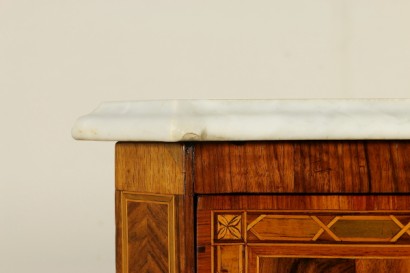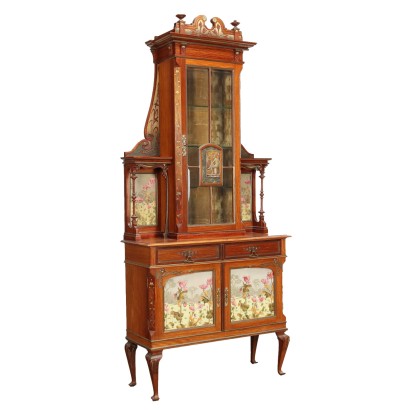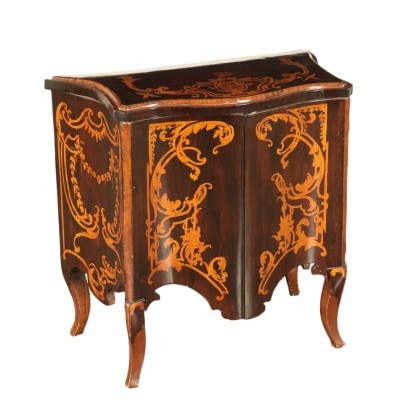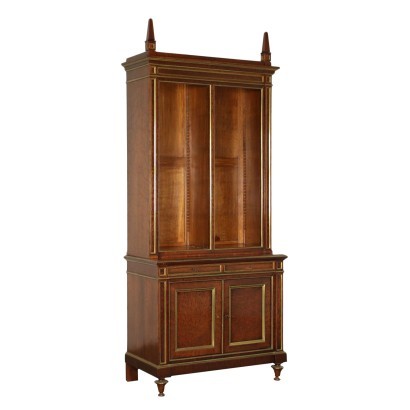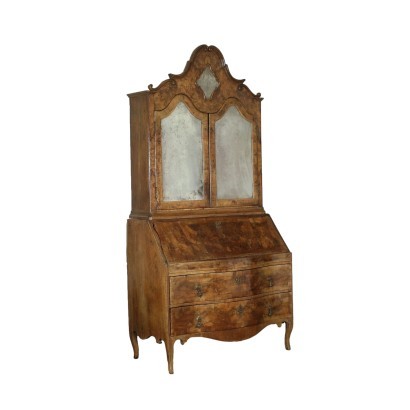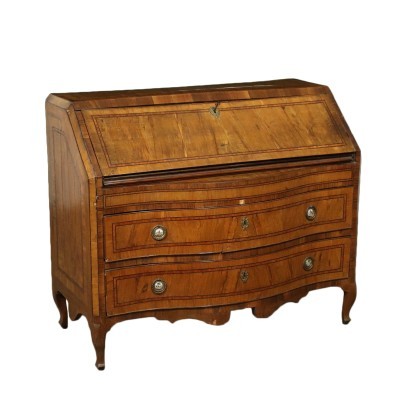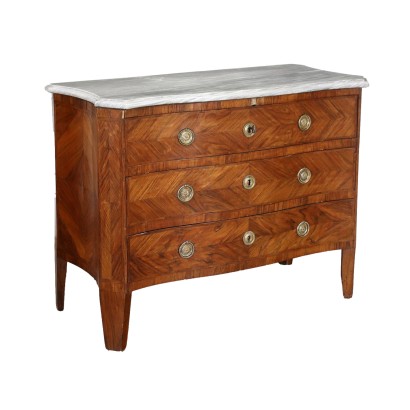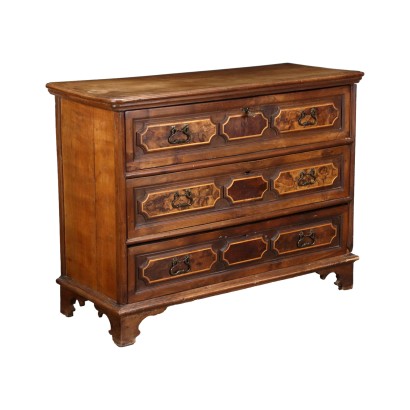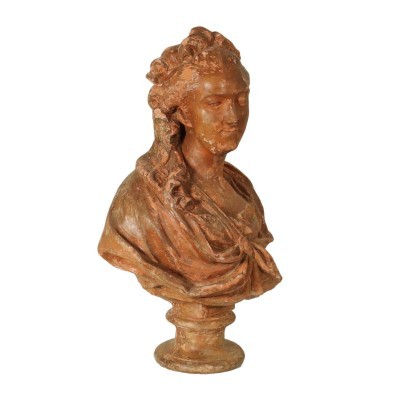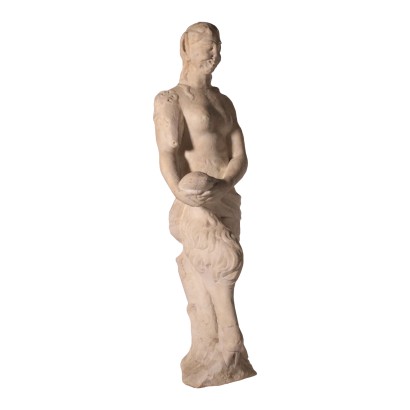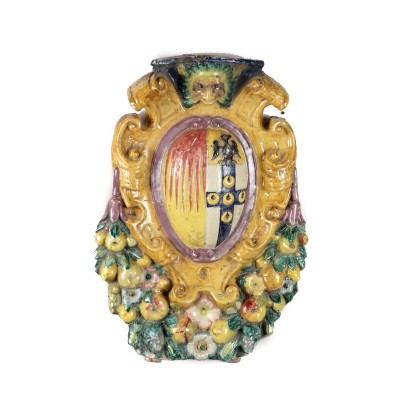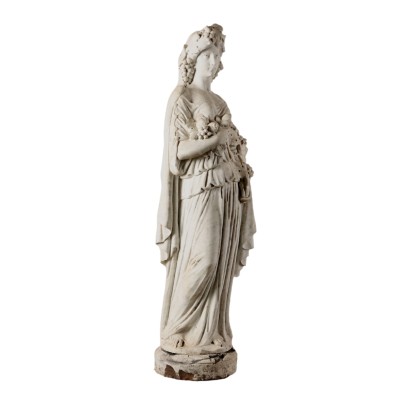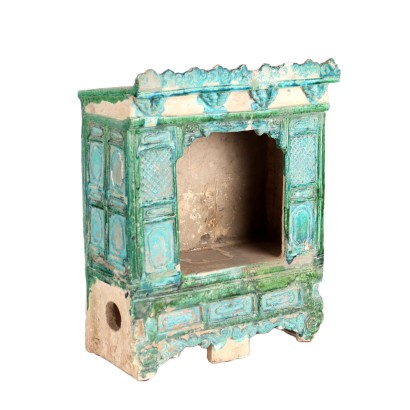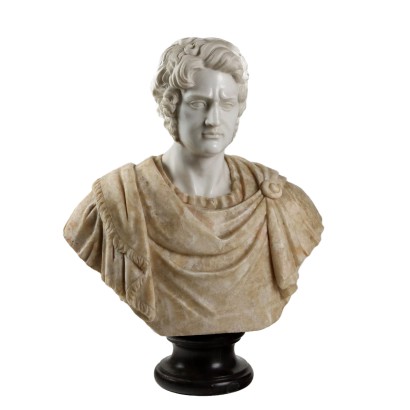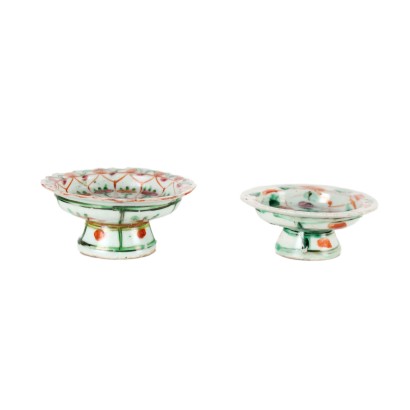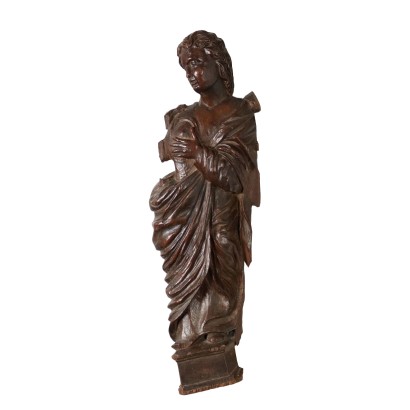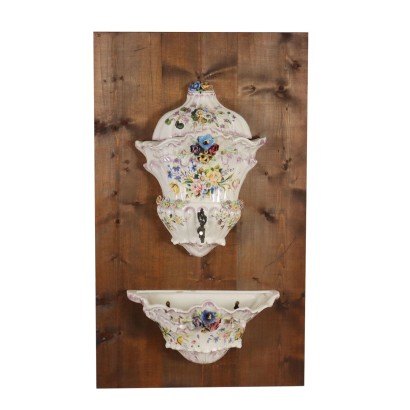Neoclassical Chest of Drawers
Features
Style: Neo-Classical (1765-1790)
Age: 18th Century / 1701 - 1800
Origin: Torino, Italy
Main essence: Walnut
Material: Walnut Slab , Solid Wood of Different Species
Description
A late 18th Century Neoclassical Italian walnut and rosewood veneered inlaid chest of drawers with 45° uprights. Pair of drawers with central rose decoration and a smaller drawer underneath the top. Shaped Carrara marble top. Walnut panels, various woods inlays. Manufactured in Torino, Italy.
Product Condition:
Good condition. Wear consistent with age and use. Any damage or loss is displayed as completely as possible in the pictures.
Dimensions (cm):
Height: 93,5
Width: 124
Depth: 54
Additional Information
Style: Neo-Classical (1765-1790)
This historical period includes a first phase that can be properly defined as the Louis XVI style.nOnly at a later time, with the maturation of archaeological fashions, was a new vision of furnishing civilization formulated and codified, now fully attributable to the Neoclassical Style.
In fact, both trends coexisted in unison until the last years of the eighteenth century.
nIn the field of cabinet making, the Directoire, Retour d'Egypte, Consular and Empire styles also fall within the neoclassical era.
nFind out more about Neoclassicism with the insights from our blog...
n




